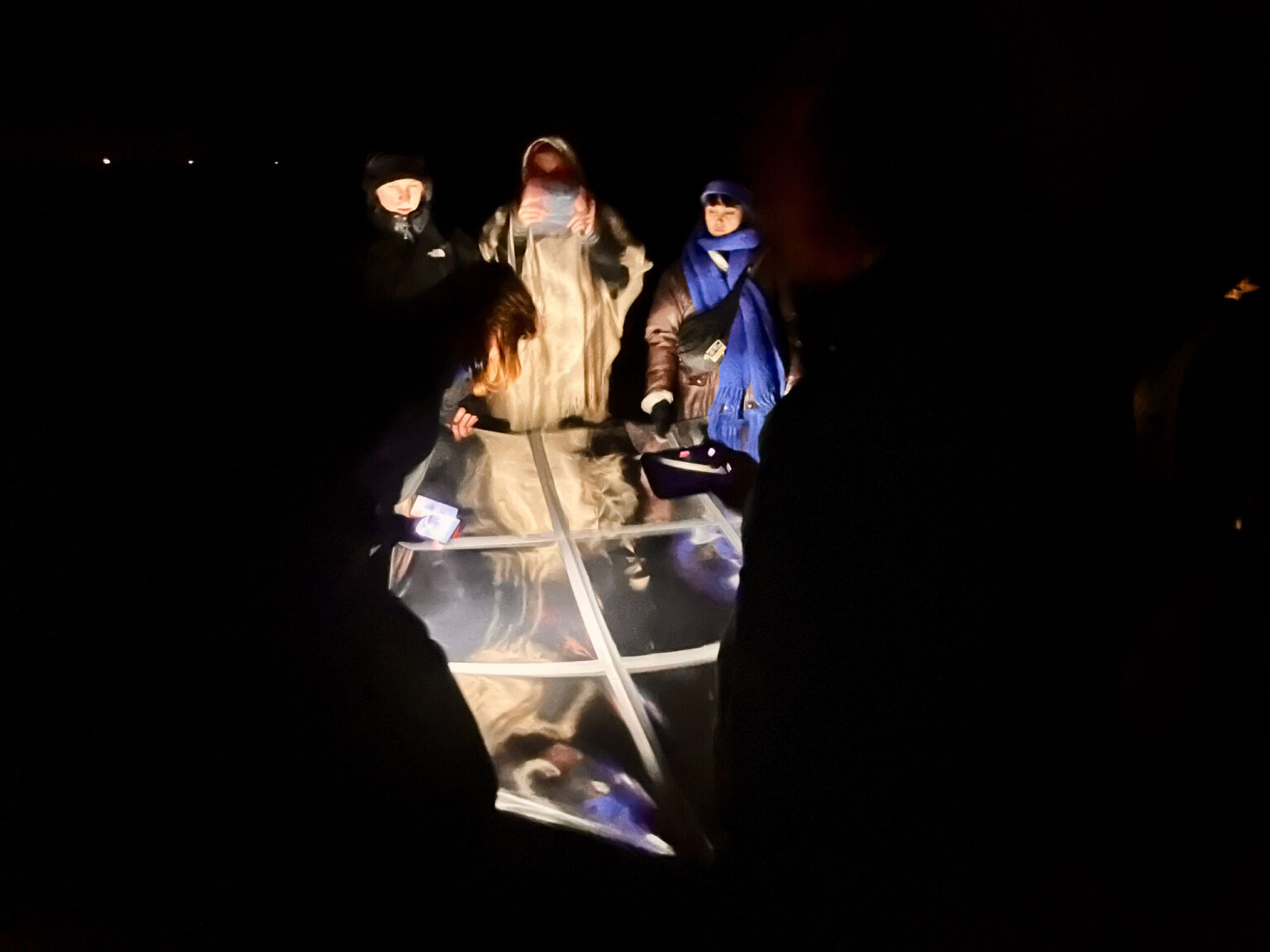
Stars in Their Eyes: Workshop and Exchange with Adriana Knouf
And so, NOAA-15 can wait
They know it’s too late as we’re walkin’ on by
Their soul slides away
But “Don’t look back in anger,” I heard you say
‘Don’t Look Back In Anger’ Oasis 1996, adapted for NOAA-15
Open-weather joined Art Science students doing fieldwork with Dutch artist and educator Cocky Eek at the dark sky site of Het Lage Noorden in Friesland.
Constellations of satellites, including earth observation satellites known as “unblinking eyes”, increasingly outshine the stars and add movement to the relative stillness of the night sky. Mostly unlit, hurtling through darkness, these satellites are only visible at night when caught in the sun’s rays.
We asked: can we return the their gaze? By building ground stations in the darkness of the low North, can we watch a sunlit satellite pass overhead, while receiving its near real-time imagery of us? What would this shot-reverse-shot yield?
At night, weather satellites switch to a combination of infrared sensors. These sensors are tuned to waves radiating – as opposed to reflecting – from Earth’s surfaces and atmospheres. The resulting grayscale images are ghostly pale. To meteorologists, these images can reveal the locations of very cold cloud tops, indicating the formation of towering cumulonimbus clouds associated with extreme weather, such as torrential rain, hail and electrical storms.

In the Sonic Acts supported workshop, we focused on three orbiting National Oceanic and Atmospheric Administration (NOAA) satellites that belong to a family of satellites that have been orbiting Earth since 1970 when there was little public awareness of global heating – indeed a popular narrative in the English speaking media was that the world was entering another ice age.
In tuning to the satellites’ increasingly glitchy (eyes half open, sometimes closed) transmissions, we are witnessing their slow deaths, and the end of half a century of their witnessing of the climate crisis on our behalf. As we catch each other’s eyes, what last words we would exchange, if we could?


During the workshop we carried a handmade radio mirror to a nearby dobbe. Common to the brackish fields of Friesland, a dobbe is a pool of freshwater (sweet water) protected by man-made earth mound. Radio mirrors are designed to reflect radio waves; they can be passive or active and are composed of different reflective materials, including water.
In the dark of the dobbe, we recited a scene from Lore of the Radio Fossil, a radio play open-weather wrote in 2017. Tuning-to the signal of the glitching satellite NOAA-15, we mirrored and so returned its transmission, and with it our performance, into space.
On day our last day at Het Lage Noorden, we participated in a workshop and on queer asteroids by artist, musician, and xenologist, Adriana Knouf.
Credits
Thank you Cocky Eek for inviting us, organising the workshops, and being such a warm host.
We are grateful to Het Lage Noorden for the hospitality and support during out stay.
Open-weather’s workshop was generously supported by Sonic Acts. Read more here.
We are especially thankful for the artistic exchange with with Adriana Knouf. Thank you Adriana for sharing your works in progress.